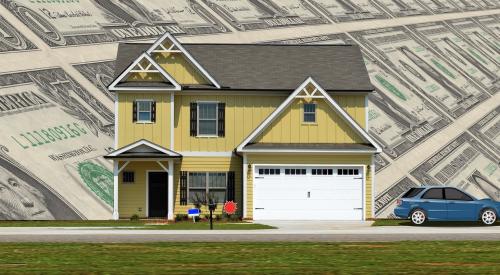|
www.pathnet.org
|
The regulatory approval process - completing a permit, application check-in, plan reviews, fee calculation and collection, inspections and more - can be both frustrating and mind-numbing. A lack of trained inspectors, understaffed departments and an overly bureaucratic system can drag out the process for six months or more. But in some jurisdictions, builders, hardware and software manufacturers, and local and state code personnel are working together to remove needless red tape, save time and money, eliminate overlapping regulations and reduce code redundancy.
PATH's Information Technology (IT) Roadmap, which set an agenda for improving the regulatory approval process in 2002, recommends using computers, software, the Internet and wireless communication as tools for streamlining regulatory procedures. These tools are becoming a reality in a growing number of jurisdictions, and their wider adoption will depend in no small part on builder demand.
Cracking the Code
Building codes pose the greatest obstacles to experimenting with new building technologies, and as countless builders have learned, the obstacle course rarely stays the same.
"Dealing with building codes is very difficult," says Michael Chapman, president of Chapman Homes, a home builder based in Santa Fe, N.M. "Once we get the hang of one set of rules, they develop a new set, and here we go again."
In many cases, Chapman says, builders choose to build elsewhere instead of dealing with one jurisdiction's excessive regulations.
PATH's IT Roadmap provides multiple suggestions for using IT to streamline those regulations. For example, e-permitting, or "one-stop" permitting, allows builders to submit permit requests and pay fees online. Digital seals and signatures and an auto-mated inspection request system also save time and money for builders.
The National Alliance for Building Regulatory Reform in the Digital Age has found that regulatory streamlining through IT has yielded significant savings in some jurisdictions. In Los Angeles, for example, information technology cut the time for plan checks from six weeks to 10 days and the wait for inspections from four to five days to less than 24 hours. Now, inspectors accomplish 99% of all inspections within one day.
Innovations started in the early 1980s by a few groundbreaking jurisdictions have become viable electronic solutions for local governments across the nation. Today, hardware and software manufacturers offer an assortment of custom software and systems for both large and small jurisdictions (see Resources).
Innovative Inspections
IT solutions also have improved the inspection process in some areas. Allan Fraser, senior building code specialist for the National Fire Protection Association, has been working to improve inspections since the 1970s, when he tried to streamline the paper process to make it more efficient.
In those days, says Fraser, most jurisdictions had separate filing systems for each type of permit with cross-references in a card file. If a property had a total of, say 20 records, just finding the information could take up to two hours.
"In the 1990s, I started writing my own computer applications for permitting and payrolls in cities like Lowell, Mass.," says Fraser. "It improved productivity tenfold by the inspectors.
"What automation does is assure consistency and accuracy of each inspection, that all inspectors look for the same items and that they evaluate them in the same manner. I've also found that once builders know and understand what we're looking for, they can comply more easily, saving time and money."
What You Can Do
Builders frustrated with the regulatory approval process in their jurisdiction can:
- Organize a task force to work with local jurisdictions and provide funding or agree to pay higher fees to help adopt streamlined models.
- Become active in the National Association of Home Builders, which monitors building codes.
- Attend code action committee meetings and public workshops conducted by the International Code Council. Visit www.intlcode.org for more information.
- Visit www.b4ubuild.com, which offers resources to builders on residential building codes, construction standards and building permit information.
- Visit www.regbarriers.org to view a searchable database of strategies and success stories, a discussion board and a comprehensive list of regulatory barriers and solutions.
The Partnership for Advancing Technology is dedicated to speeding the development and use of advanced building technologies to improve the quality and affordability of America's homes. For more information and technology resources, visit www.pathnet.org.
- PATH's publication by the National Institute of Building Sciences: www.huduser.org/publications/destech/electronic_permitting.html
- Looks at current software available for permitting, plan review and inspections as well as other regulatory functions and information needs.
- PATH's Information Technology Roadmap (June 2002)
- More detailed streamlining savings are documented in the paper "The Business Case for Streamlining," which can be found on the Alliance home page of the NCSBCS Web site, www.ncsbcs.com.
- Hansen Information Technologies, a provider of e-permitting products
- Eden Systems Inc., a provider of permitting software for local governments
- International Code Council, a consolidation of several code bodies that offers training and other resources: www.intlcode.org
- "Smart Permit: A Blueprint for Success, a How-To Manual for Smart Permitting," published by Public Technology Inc. (PTI) in Washington for $30. Purchase by calling 1-800-PTI-8976.











